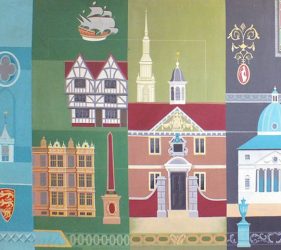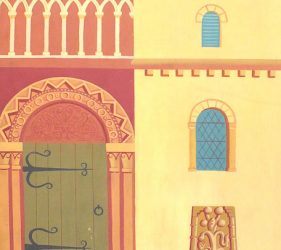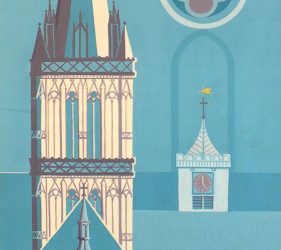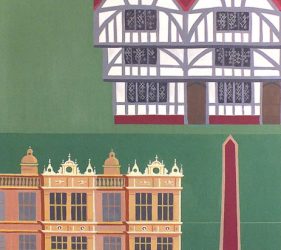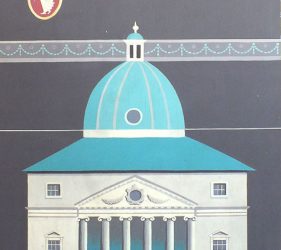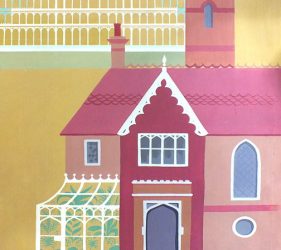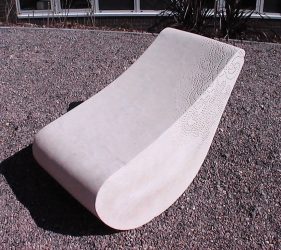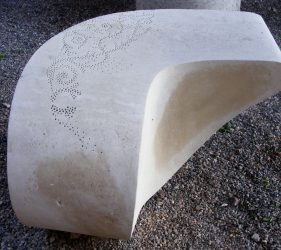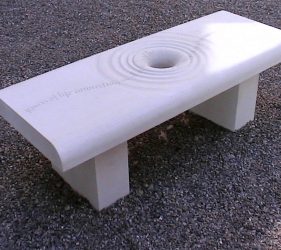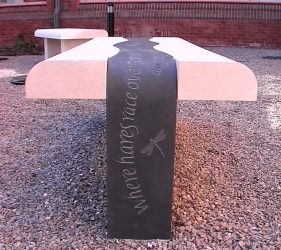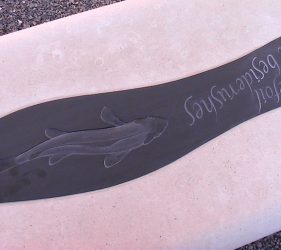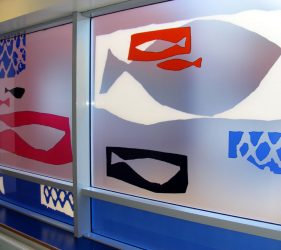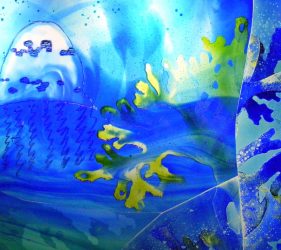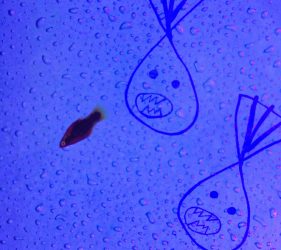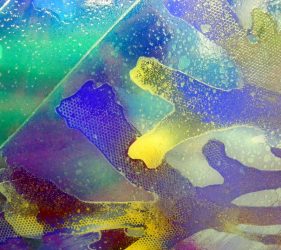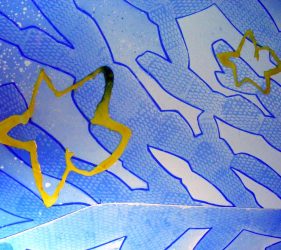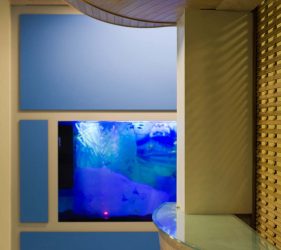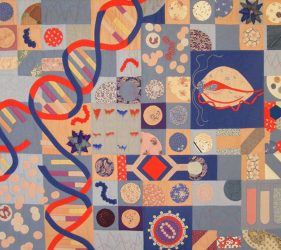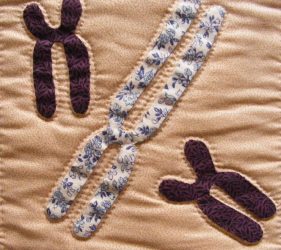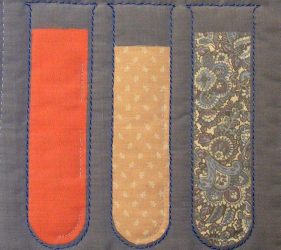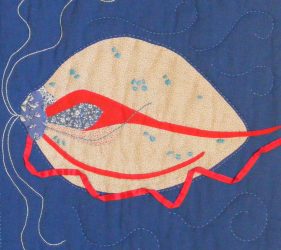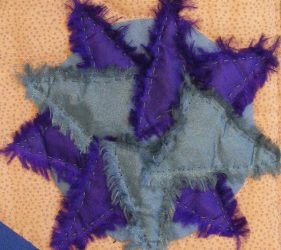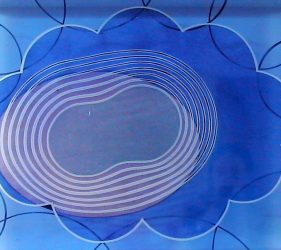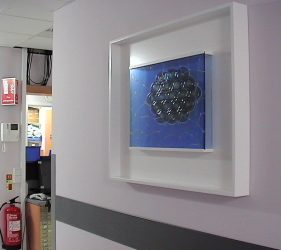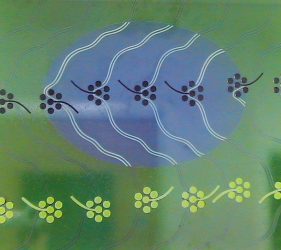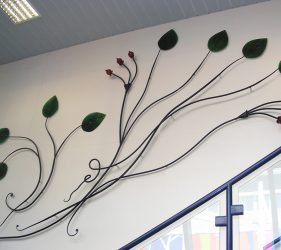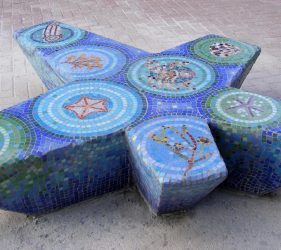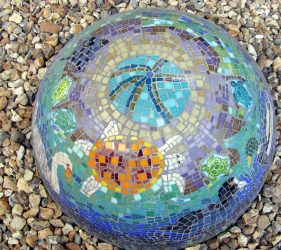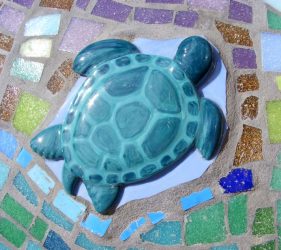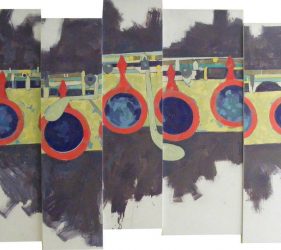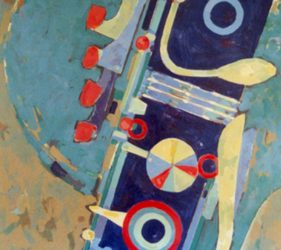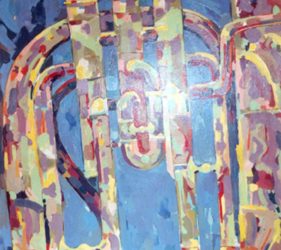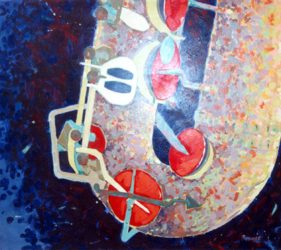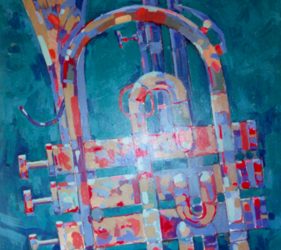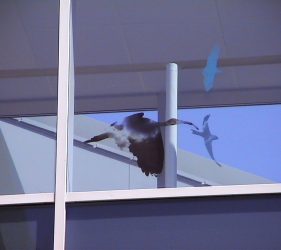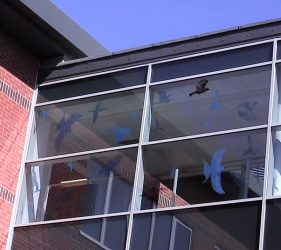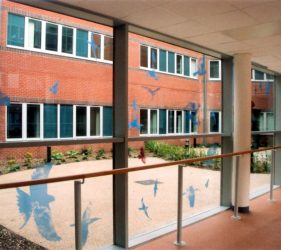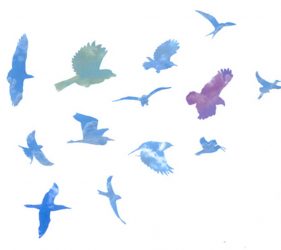Artist: Sasha Ward
Location: Burns Unit, Level 4, SDH North
Artist Sasha Ward was commissioned to produce artworks for the public areas of the new Burns Unit, which meant making glass panels for corridor walls, rather than for windows.
Sasha met with staff, patients and visitors from the unit to show them some of the techniques she uses and some examples of her previous commissions. Following the discussion she decided to explore representations of water, which not only echoes the properties of glass with its transparent qualities but also links to the ‘soothing’ aspect of the treatment in the Burns Unit.
Sasha commented, “I wanted the glass to remain light. By using mostly blue and green tones on the panels with some purple, yellow and grey the finished artwork is transparent and soft, with subtle lighting rather than a bright glare.”
In the designs for the panels Sasha combined observations of water in streams, pools and basins with diagrams based on water molecules in various formations and with floating flowers.
The panels were made using 6mm float glass that Sasha fired with layers of transparent enamels, sandblasted for texture and toughened, making them able to withstand the intensive cleaning needed in the Burns Unit.
About the artist
Sasha says, “My work is made for buildings, with the aim of adding interest through the use of colour and pattern or specific subject matter. I work mostly in glass and have always used techniques, as well as imagery, that are compatible with modern building methods. Most of my work has been commissioned for public buildings and it ranges from small stained glass chapel windows, to balustrading, to colour schemes for hospital departments. My main interest is in the play of shadow and coloured light transmitted through glass…”
Sasha started by making stained glass windows in her bedroom when she was 15. After leaving school, she chose a foundation course at The Central School of Art & Design (1977-78) where she could also study stained glass. Sasha subsequently did a Fine Art Degree at Trent Polytechnic (1979-82) followed by an M.A. in Glass at The Royal College of Art (1983-85). Following the award of a Crafts Council Setting Up Grant in 1986 she set up a studio, with a first public commission awarded in the same year. Since then Sasha has completed over 40 public commissions, many of which have included a participatory or community element. Most significant was a Residency with 4 Day Centres for adults with learning disabilities and the Russell-Cotes Art Gallery & Museum in Bournemouth in 1995-96. Sasha has been a Southern Arts Crafts Advisor (1994-97) and a member of The Crafts Council Grants Committee (1997-2000)
This commission was funded by Arts Council England, South West.
Audio description of Water Windows

